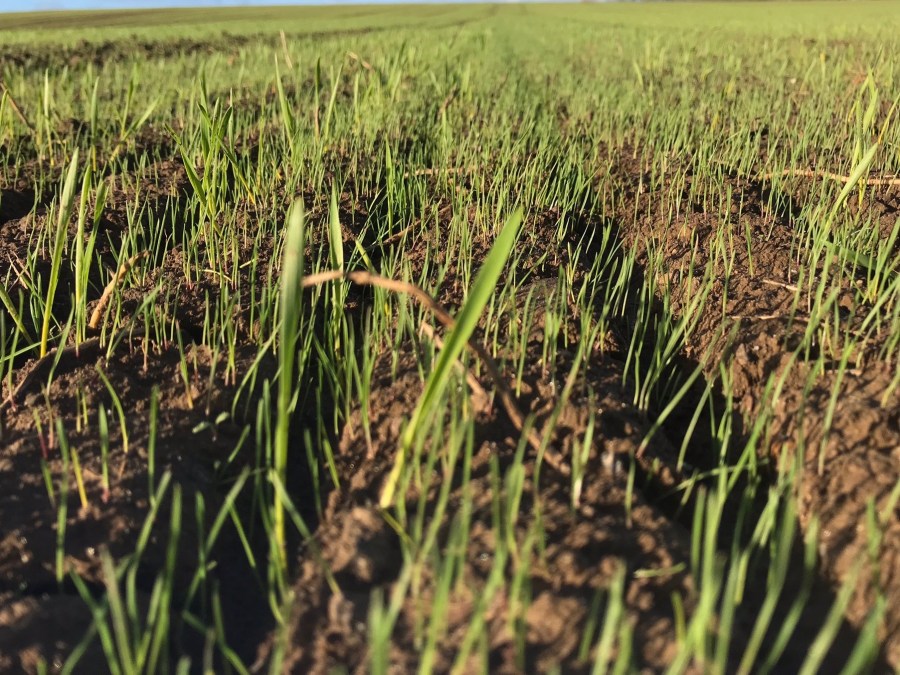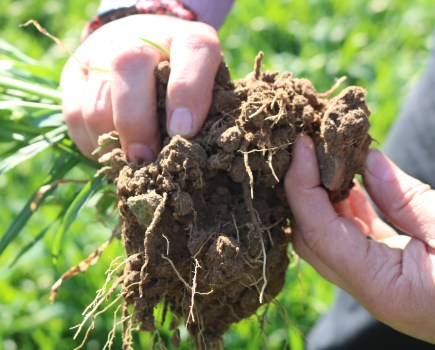Following a five-point plan could help get the best out of soil-acting blackgrass herbicides, according to the latest advice from ProCam. Charlotte Cunningham reports.
With residual, soil-acting herbicides often now representing a quarter to a half of the annual crop protection investment made in winter wheat in blackgrass situations, getting the best out of them is paramount, according to ProCam agronomist, Mark Anstee.
In response, he has developed a five-point plan, which he believes could also potentially help against increasingly problematical ryegrass.
- Begin with a fine, firm seedbed
Creating an even soil surface with a fine crumb structure leaves fewer inaccessible ‘hiding places’ where blackgrass can germinate from and where herbicide sprays can’t reach, says Mark.
By contrast, clods shield the soil surface beneath them from sprays, and can fracture open later, releasing blackgrass seed to germinate from their centres, he warns.
“You’re better off establishing 150ac well, so you get good kill of blackgrass, than 200ac poorly where blackgrass can flourish.
“Prior to planting, aim to kill off two flushes of blackgrass in stale seedbeds, cultivating lightly and rolling after spraying off the first flush to stimulate the next one to come through.”
- Apply residual herbicides at the right time
Apply pre-emergence herbicides as soon as possible after drilling and certainly within 24-48 hours, unless the conditions aren’t suitable, he advises.
“Waiting too long before spraying allows time for blackgrass to establish deeper roots before the herbicide is applied. Spraying earlier means the blackgrass roots will have to grow through the herbicide layer, which increases uptake.
“However, check the weather forecast to ensure the conditions are right for herbicide activity.”
If it’s hot and dry, herbicides will break down faster in the soil, so won’t give the necessary duration of control and won’t be taken up by the blackgrass roots, adds Mark.
“The ideal is to spray when the soil is damp but no heavy rain expected, to allow time for the herbicide to adhere to soil particles. A dump of rain within 24 hours increases the risk of leaching. The rule is: if you don’t have the conditions to spray, don’t drill – though that’s easier said than done.
“Another advantage of delaying drilling against blackgrass is you get better residual herbicide activity because soils are cooler and damper, and conditions less bright.”
- Keep residuals away from crop roots
Good control of blackgrass from residuals is one side of the coin, but the other is minimising the risk of them taking their toll on the crop.
“Always drill deep enough according to the herbicide label so the crop roots are well below the herbicide layer – for example, seed covered by a minimum of 32 mm of settled soil, or sometimes more,” says Mark.
“It’s not unusual to see seed only going down to 20 mm, often because the drill is being pulled through the soil too quickly and is bouncing out.
“Safeguarding the crop has become even more important as herbicide stacks have come to contain more active ingredients. For example, you might apply a three-way stack at the pre-emergence timing and then spray again with a two-way stack at peri-emergence. Although crop effects are usually transient, if they hold back crop growth, it can render plants more vulnerable to damage by slugs.”
- Keep residuals in the blackgrass root zone
At the same time as keeping herbicides away from the crop root zone, do everything possible to keep them in the blackgrass root zone to maximise weed uptake, he advises.
“There are products available that help to hold the herbicide towards the top layer of soil in the blackgrass root zone, and minimise its movement down to the crop roots. We’ve seen these types of treatment getting better in our evaluations over the years. They’re a low-cost investment. If they give a 5-10% improvement in herbicide performance, that can make a big difference.”
- Achieve good spray coverage
According to Mark, it’s a myth that only foliar sprays benefit from good spray coverage.
“Correct nozzles, such as angled nozzles to reach all exposed surfaces of soil particles, and correct spray quality, to reduce drift and provide more spraying opportunities, are both important for getting the best coverage and spray timing with residuals. What’s also important is the correct forward speed.
“This not only reduces the vortex behind the sprayer that can carry spray droplets away from their target, it also reduces boom bounce, which can lead to uneven dosing.
“Similarly, set the boom to the correct height to reach the target, usually 50cm from the soil surface. And apply in the correct water volume. You can see the benefit of using 200 l/ha, rather than lower volumes, for improving spray coverage,” he says.




